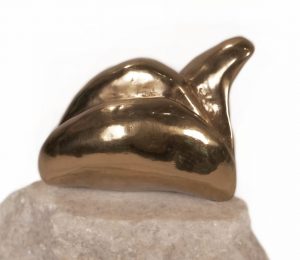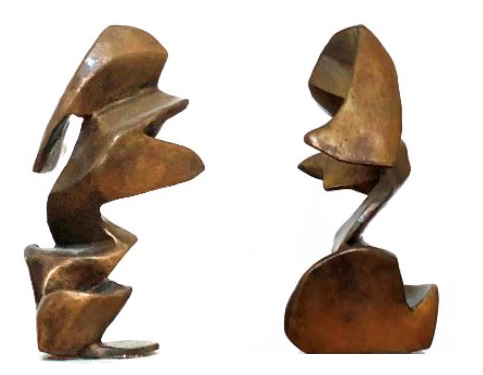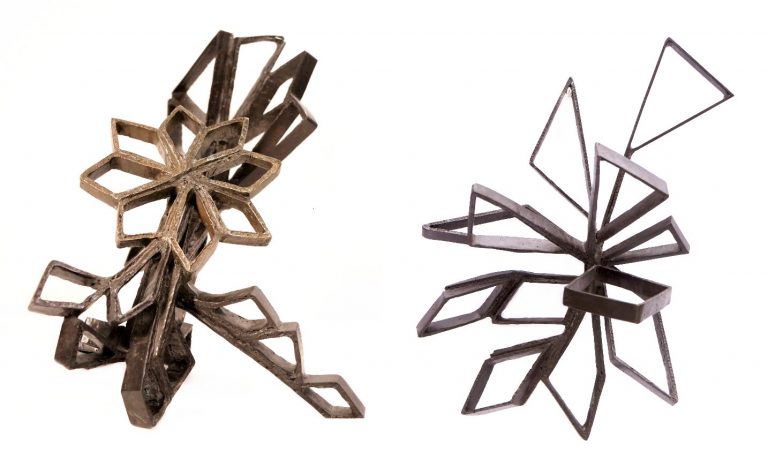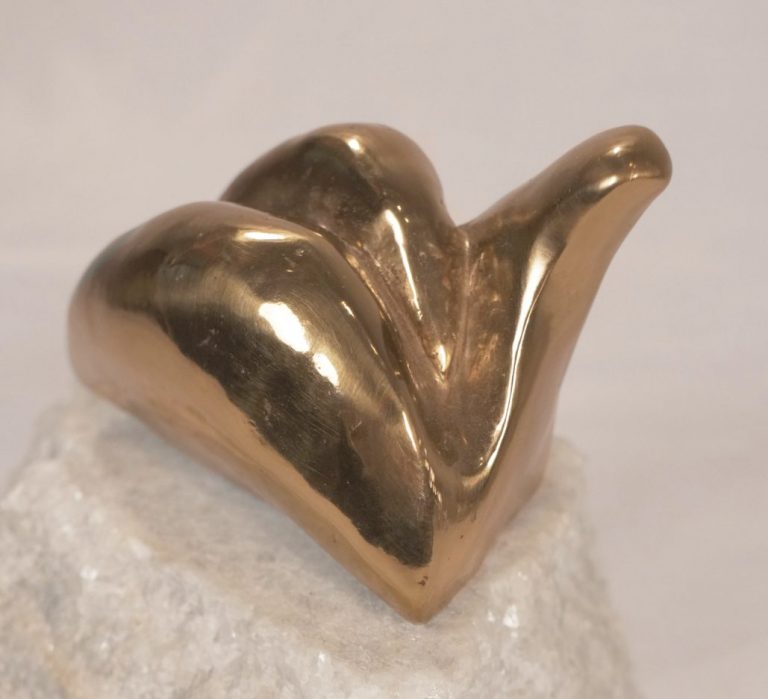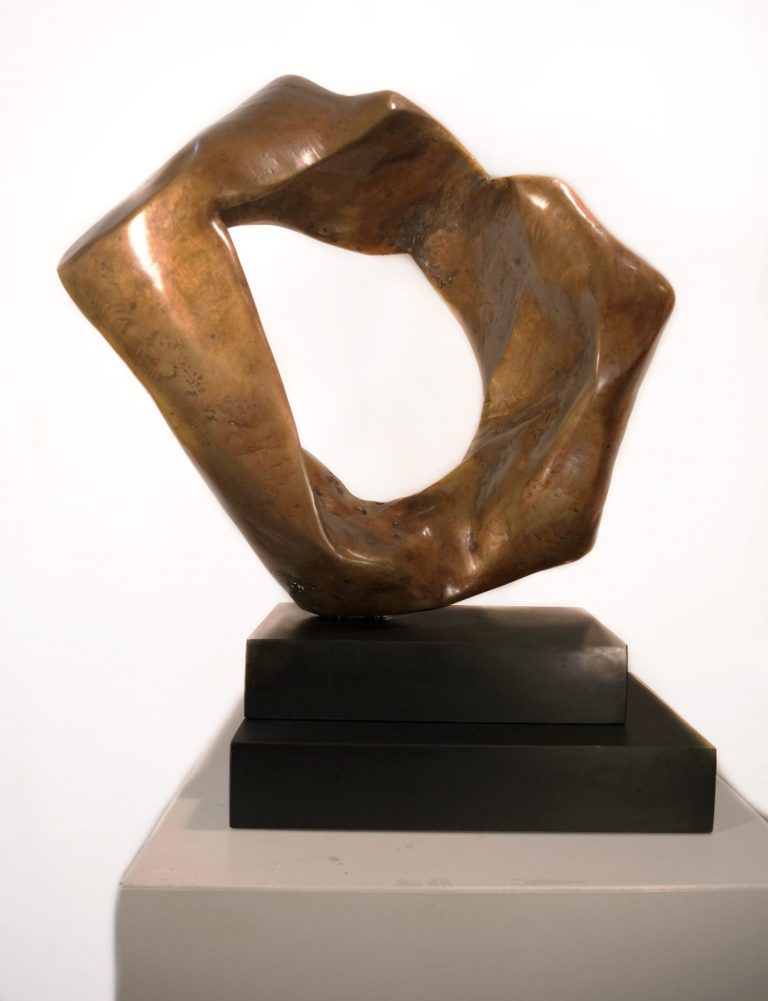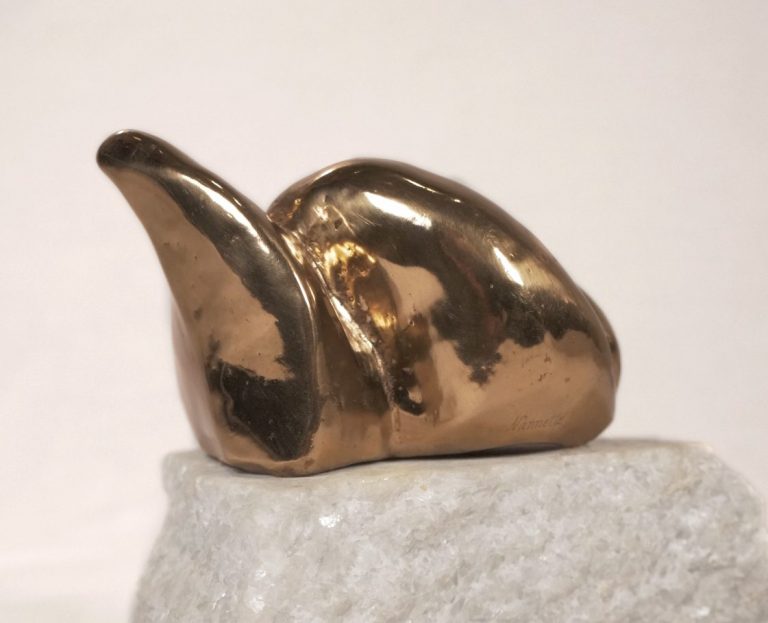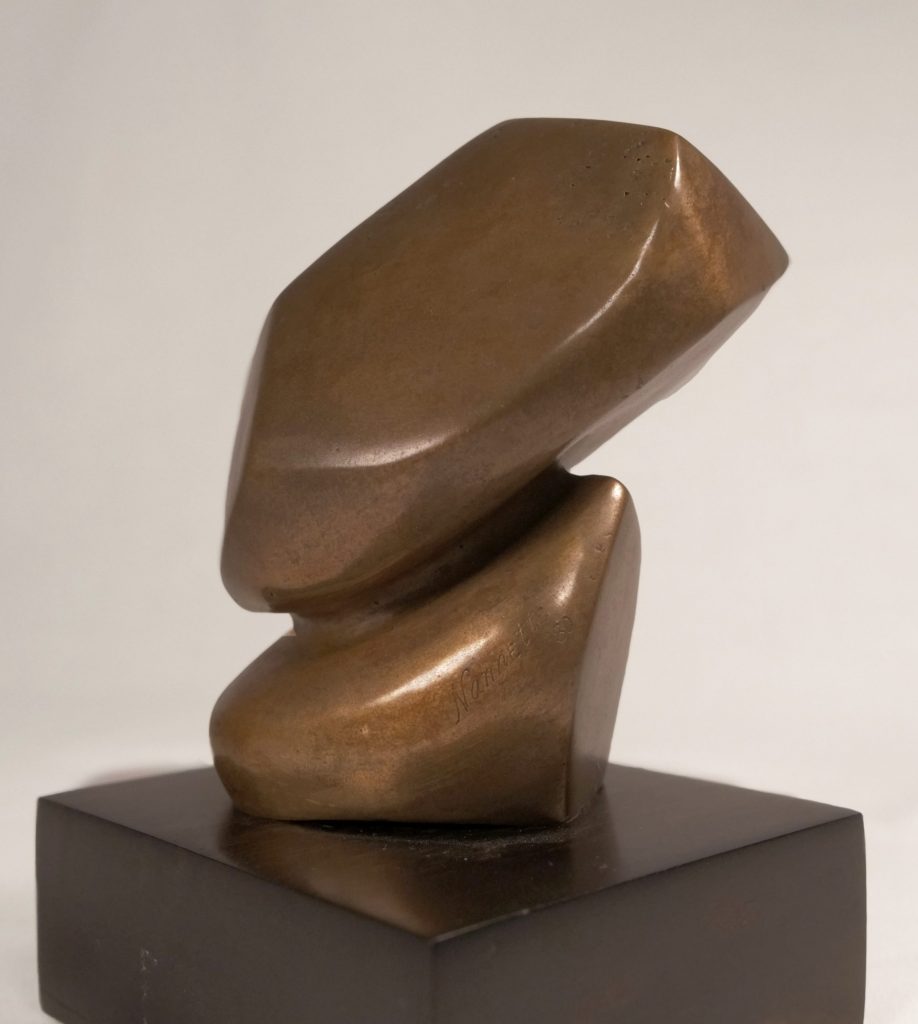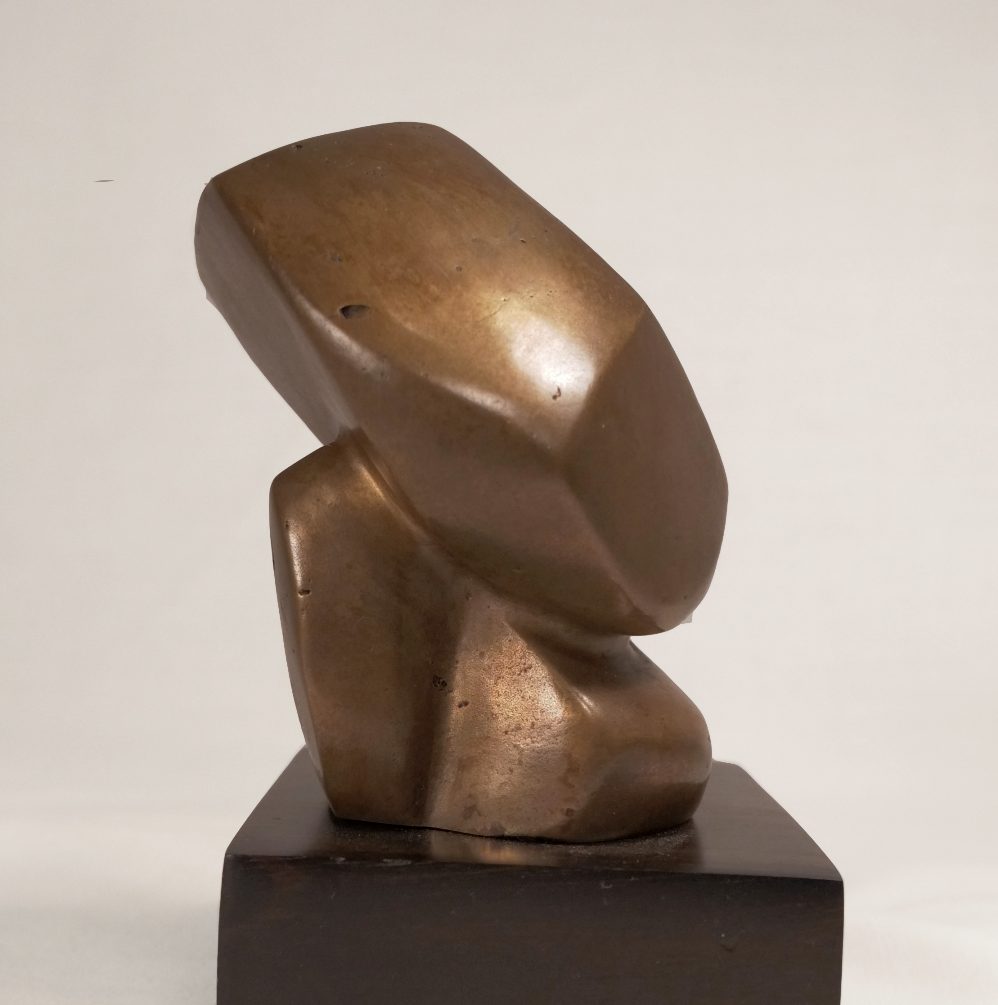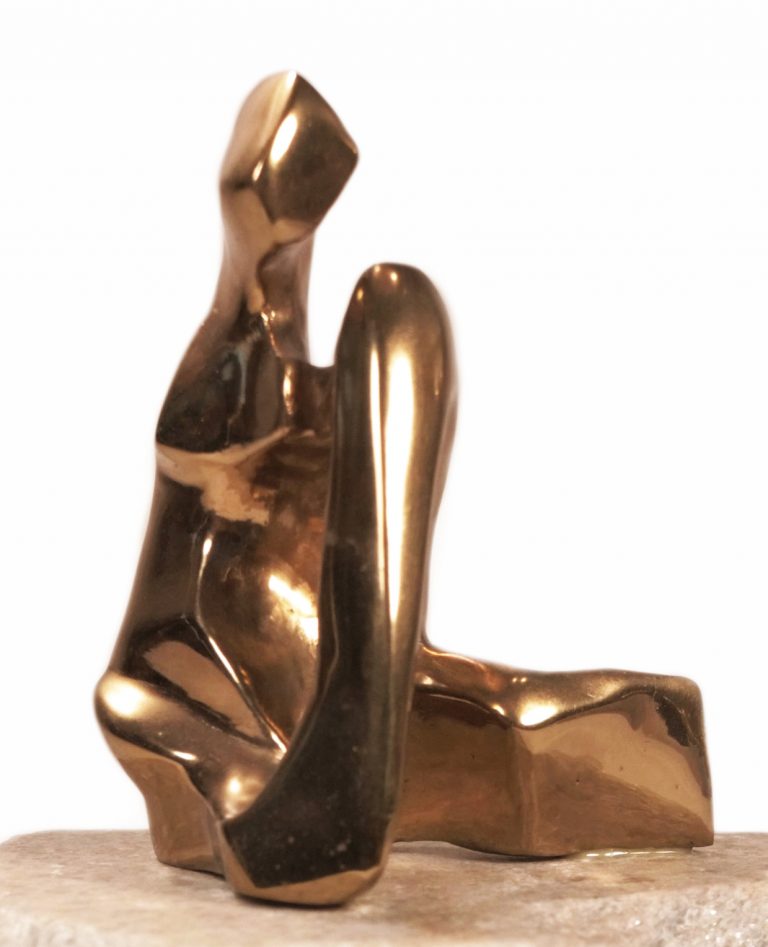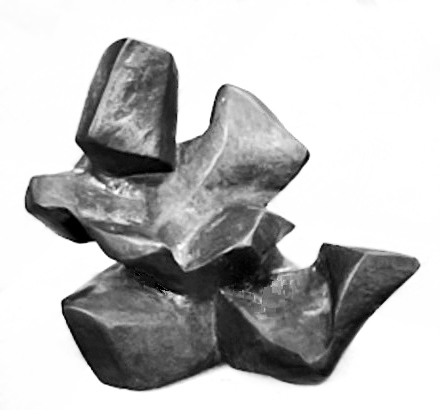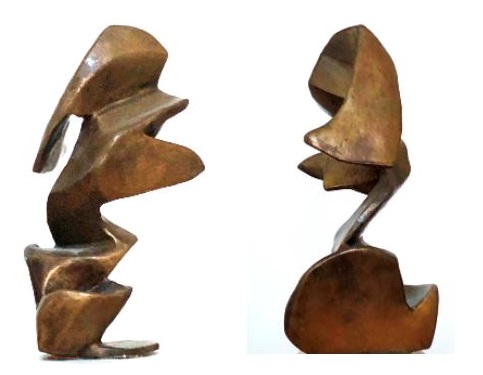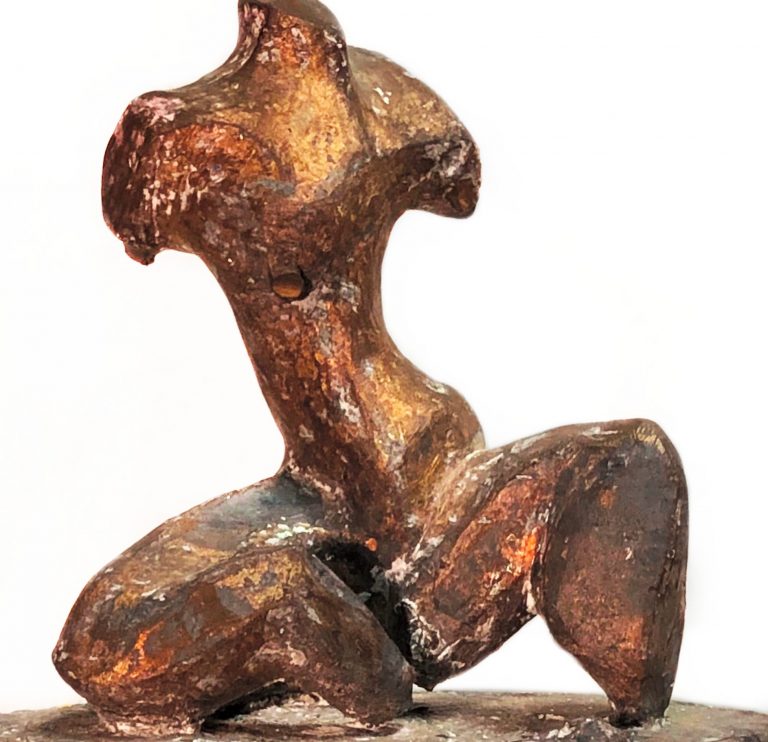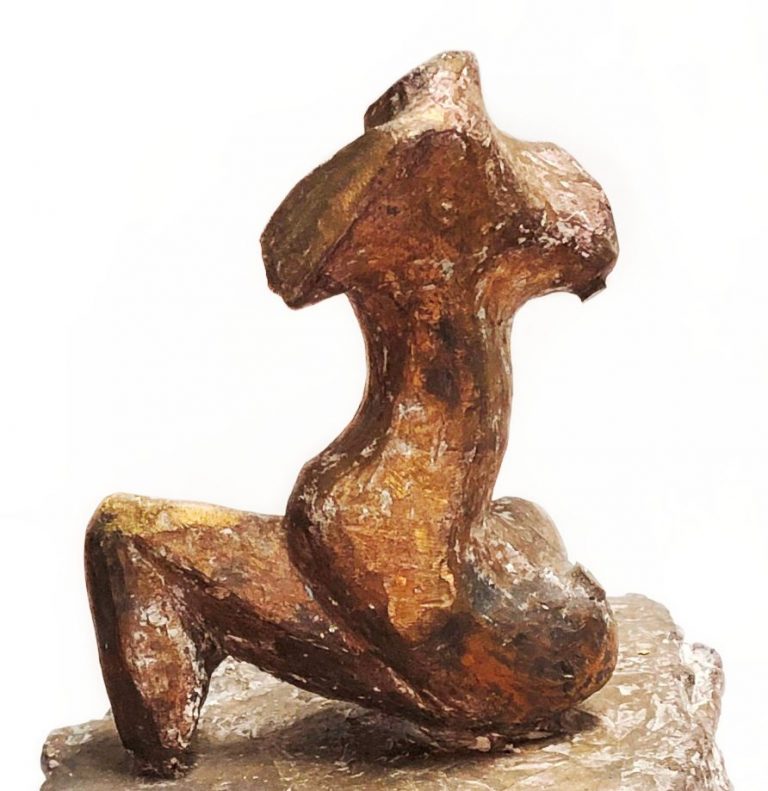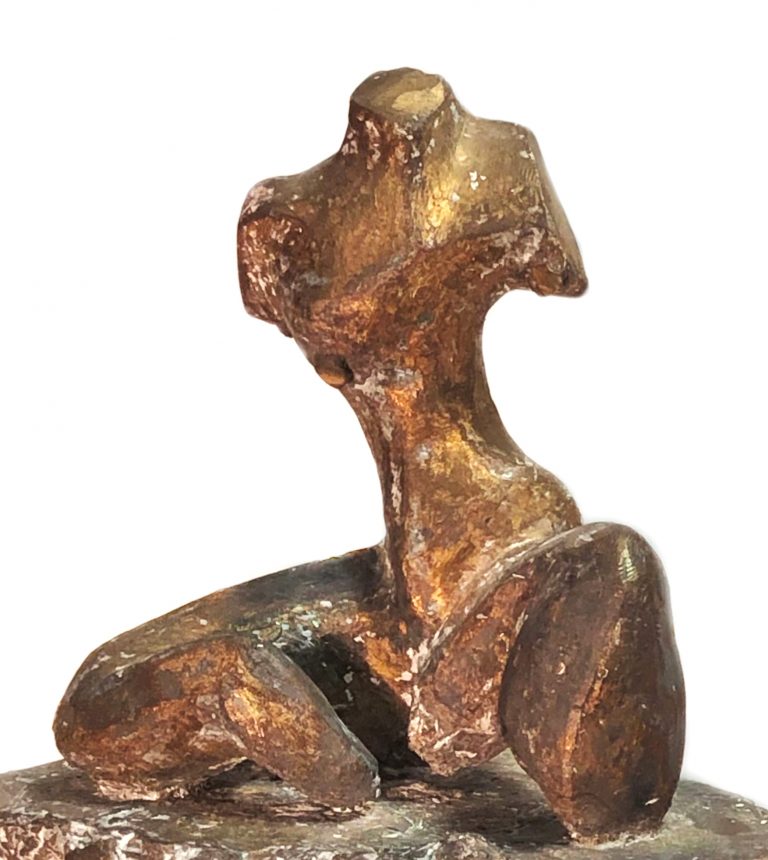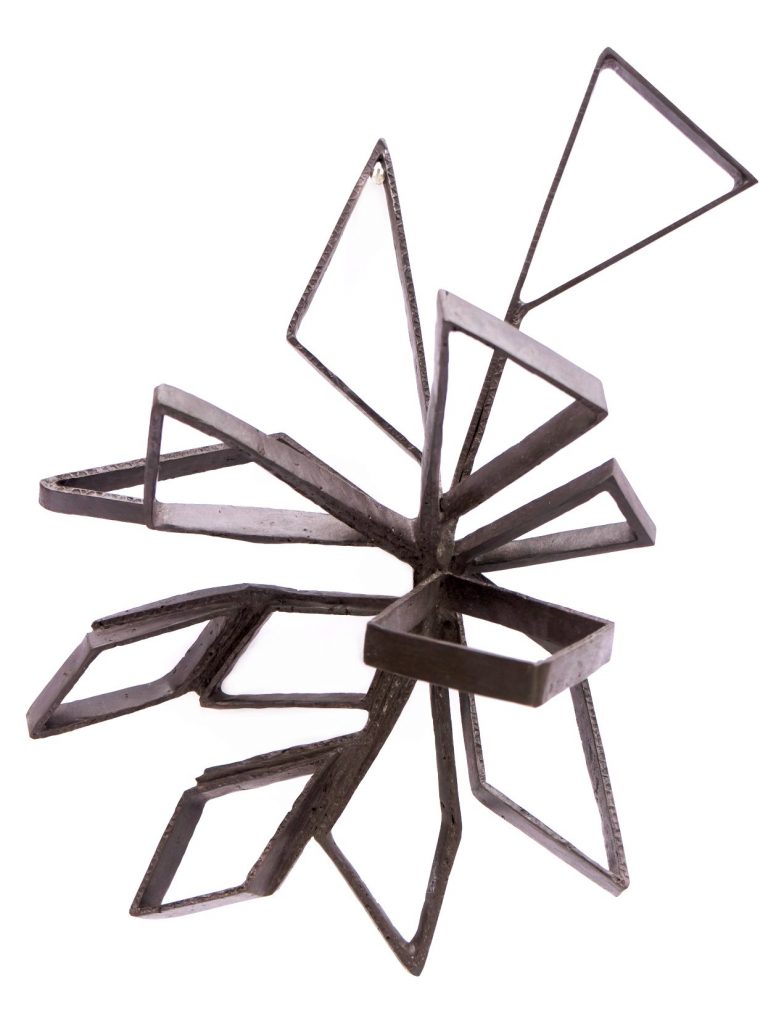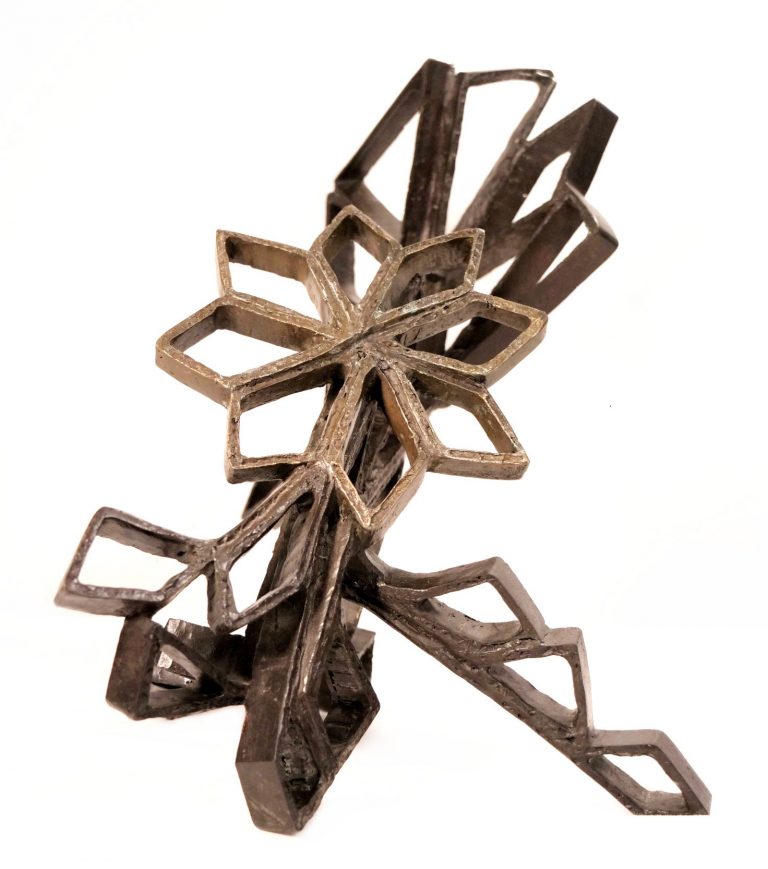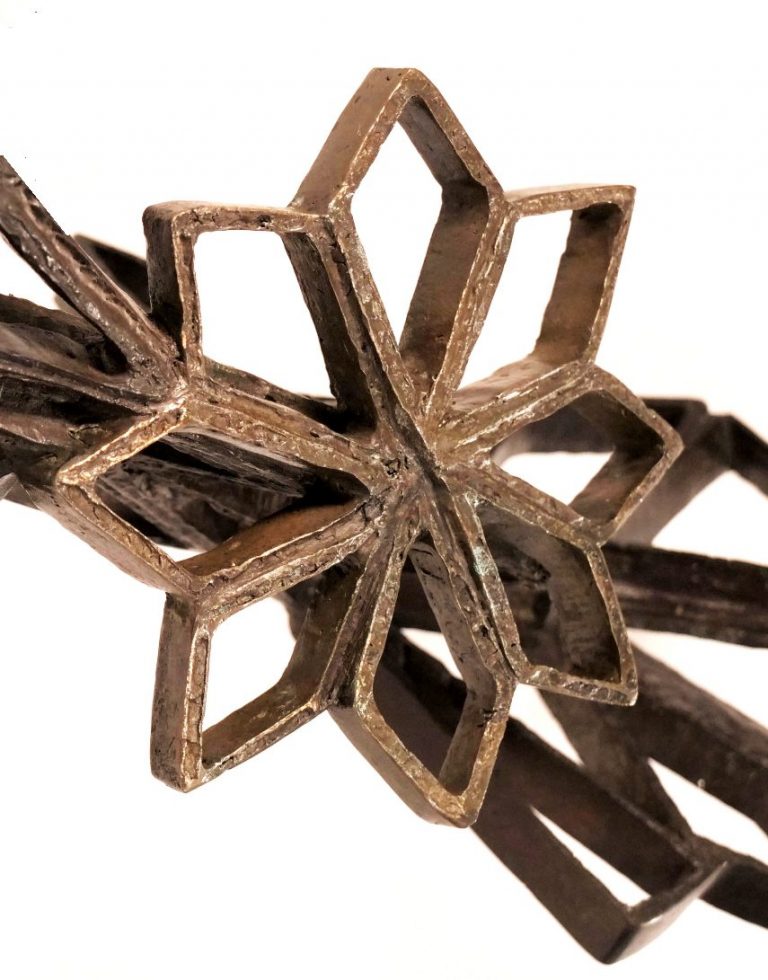abstract bronze
I began creating small bronze abstract-sculptures in the 1980s. As my images grew in size, so did my learning curve. At first, my objects were only 3-5 inches tall; making the lost-wax casting process manageable and a perfect learning exercise.
_________________________________________________________________________________________________________________________________________
1980 | Deja’ vu | bronze | back view
4″x3″x2″ | Prototype for Balance
1980 | Resilience | bronze | 3″x3″x3″ | right – left views, respectively
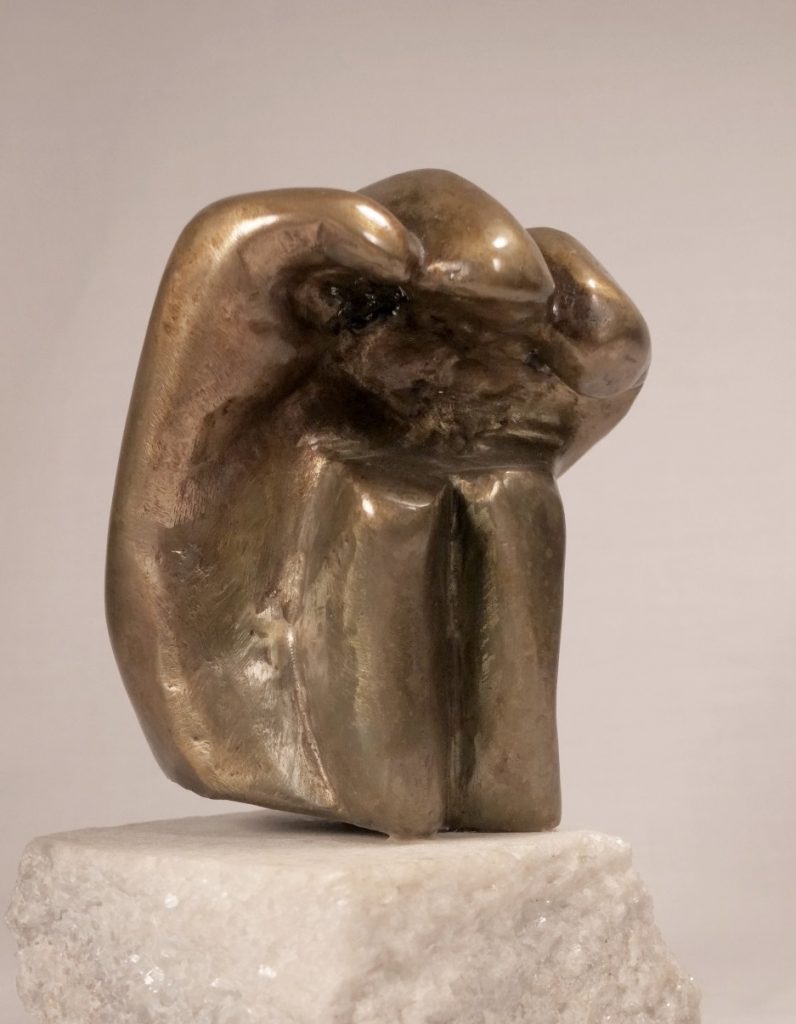
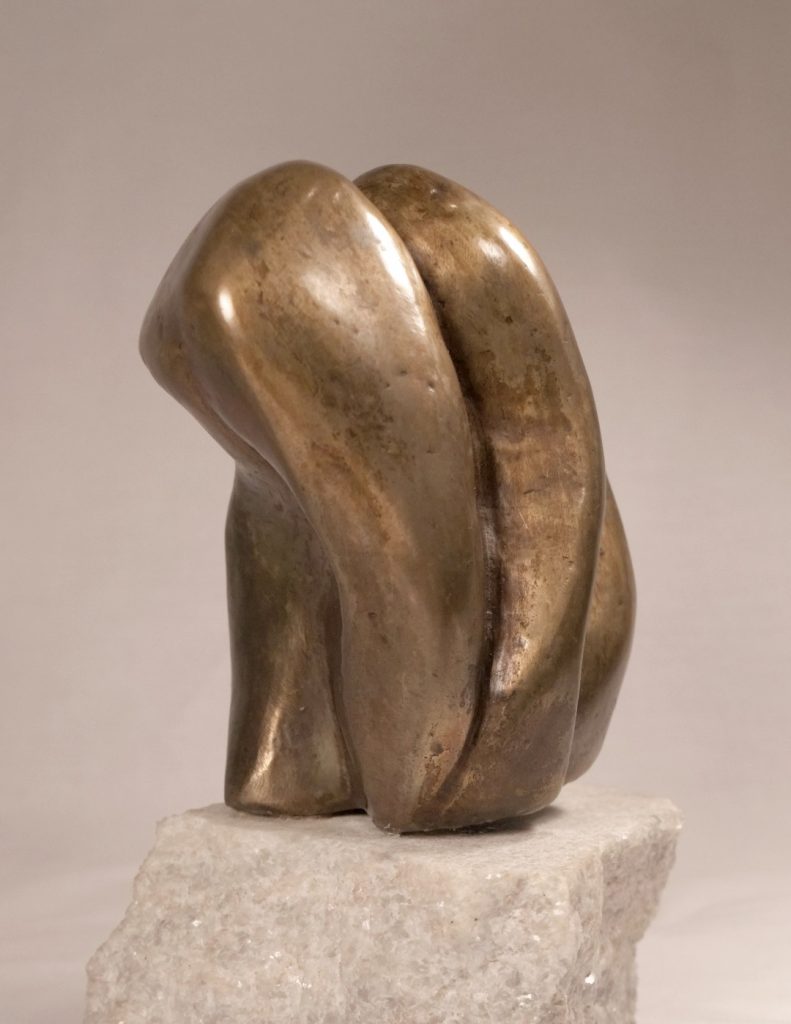
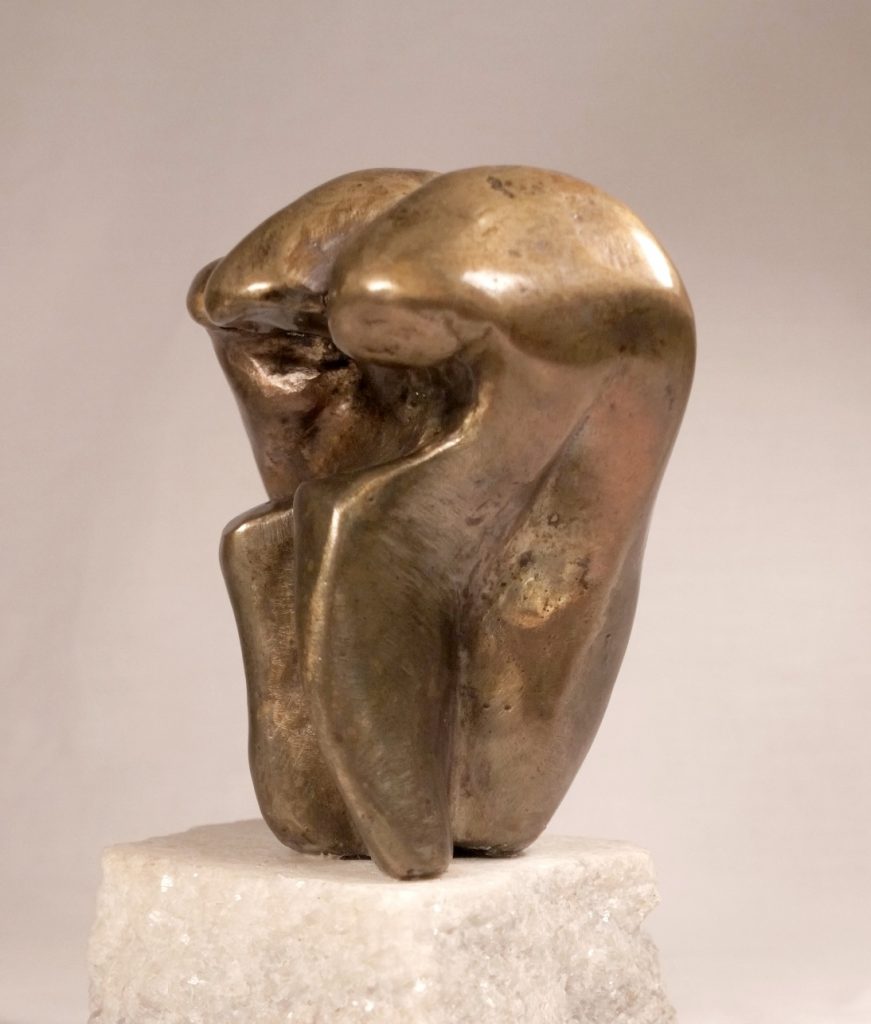
1980 | The Hand | bronze | 4″x4″x3″ | front- back- left views, respectively
_________________________________________________________________________________________________________________________________________
1980s | Abstracted Nudes
1981 | Aerobic | bronze | 5″x4″x4″ | front- back- left front views, respectively
_________________________________________________________________________________________________________________________________________
1999 | Cardboard to Bronze
Both Spider and Dad were made with thin-corrugated cardboard strips. To prepare for the casting process, all surfaces and holes had to be coated with wax.
